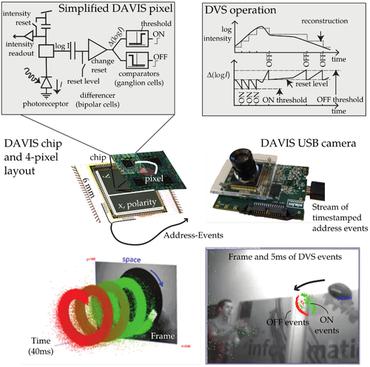Tracking Particles Ejected From Active Asteroid Bennu With Event-Based Vision
Early detection and tracking of ejecta in the vicinity of small solar system bodies is crucial to guarantee spacecraft safety and support scientific observation. During the visit of active asteroid Bennu, the OSIRIS-REx spacecraft relied on the analysis of images captured by onboard navigation cameras to detect particle ejection events, which ultimately became one of the mission's scientific highlights. To increase the scientific return of similar time-constrained missions, this work proposes an event-based solution that is dedicated to the detection and tracking of centimetre-sized particles. Unlike a standard frame-based camera, the pixels of an event-based camera independently trigger events indicating whether the scene brightness has increased or decreased at that time and location in the sensor plane. As a result of the sparse and asynchronous spatiotemporal output, event cameras combine very high dynamic range and temporal resolution with low-power consumption, which could complement existing onboard imaging techniques. This paper motivates the use of a scientific event camera by reconstructing the particle ejection episodes reported by the OSIRIS-REx mission in a photorealistic scene generator and in turn, simulating event-based observations. The resulting streams of spatiotemporal data support future work on event-based multi-object tracking.
PDF Abstract


